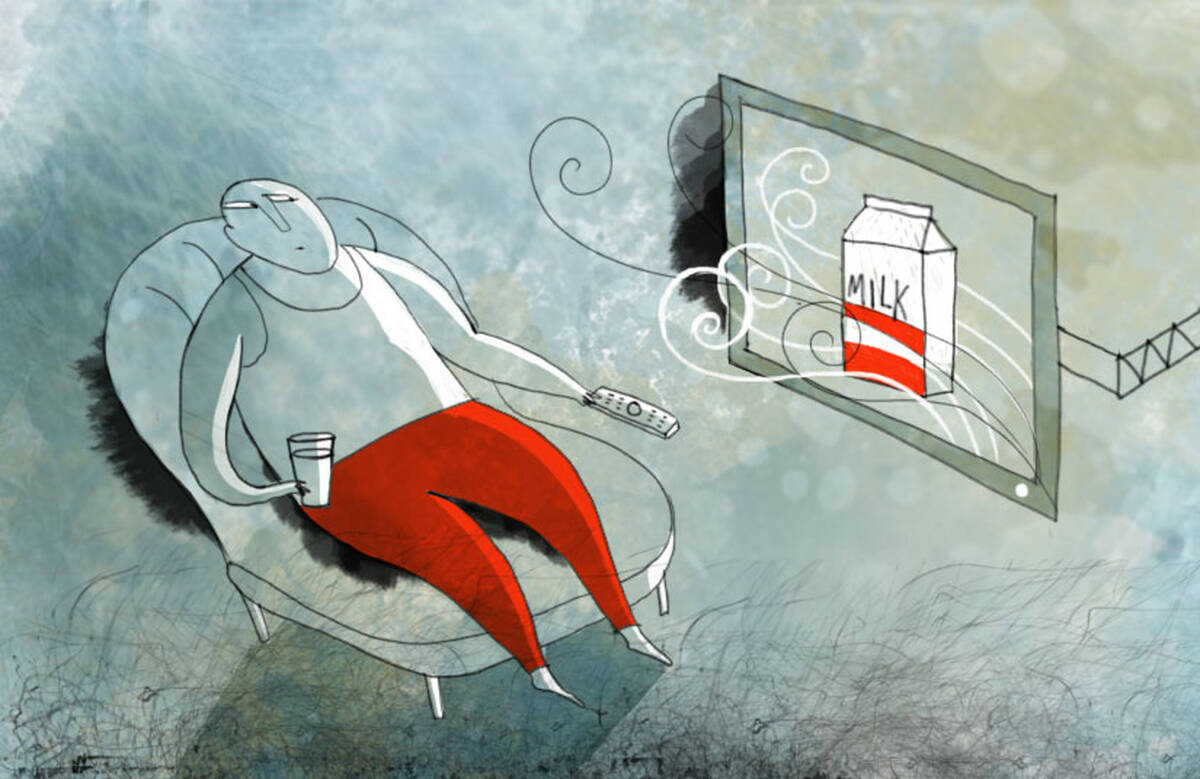Marketing Jul 1, 2016
Hate Commercial Breaks? Here’s Why You Shouldn’t
There’s a hidden value to ads during TV shows.

Yevgenia Nayberg
A familiar scene plays out in living rooms every night. You are absorbed in a TV show, when a jingle signals the beginning of a commercial. To advertisers and television channels, the next few seconds are crucial: Do you see this as an opportunity to click to another channel, or will you sit through the commercials? And if you leave the channel, will you return after the commercials to continue watching your show?
The chance to grab millions of eyeballs during primetime shows drives marketers to pay big bucks for seconds of airtime, creating a rich source of income for channels. But to viewers, commercials can feel like an annoyance.
“The conventional wisdom of TV commercials is that consumers prefer non-disrupted viewing,” says Song Yao, assistant professor of marketing at the Kellogg School.
This line of thinking might seem obvious to Netflix binge-watchers. And it was the reason why the Chinese government instituted a policy in 2012 that prohibited commercial breaks during a show, relegating TV advertising to slots between shows. The government’s goal was to make the viewing experience more enjoyable.
“When we learned about this policy, we started thinking about whether removing commercials is always good for viewers,” Yao says. “It seemed ambiguous. It really depends on what you are watching when the commercial starts.”
Might commercials during shows actually have an upside for viewers? After all, they do present a break in the action, which perhaps viewers appreciate.
“Normally, we might say nobody likes a commercial, which is true. But it has some benefits from the viewer’s perspective.”
Yao, along with Wenbo Wang at the Hong Kong University of Science and Technology and Yuxin Chen at New York University Shanghai, set out to understand how commercials during a show affected TV channel viewership. Their results are relevant to any company that has to decide how to time the release of products within a specific line, from video games to Lego sets.
Sudden Ad Change
Prior to 2012, commercial breaks on Chinese TV channels were similar to those in the U.S. Ads could be broadcast both during a show and between shows. Within-show slots were more valuable from the perspective of advertisers, since it was assumed that viewers were more likely to sit through the commercials in order to see the remainder of the show they had been watching.
The Chinese policy, which banned commercials within a show but not between shows, went into effect with only 40 days’ notice. Taken by surprise, advertisers were unable to change their programming because the administrative review process imposed by the authorities took at least 50 days.
“So at that time, the only behavior that could be affected by the policy change was that of the viewers in response to the reduction of commercial time,” Yao says.
What happened once within-show ads were removed? Were viewers actually better off?
Researchers gathered a variety of information from a few weeks before until a few weeks after the policy change. This included minute-by-minute primetime ratings for the top 29 channels in Beijing, as well as household-level data from more than 1,000 set-top meters that recorded what channel people were watching at any particular minute and, for each one-minute interval, whether the channels were broadcasting a specific show or a commercial (either between or within shows).
This allowed the researchers to conduct a giant experiment in rooms across the country. How likely were people to click their remote buttons in response to two distinct situations—when commercials were presented within a TV show, and when shows ran ad-free?
Hidden Perks
The researchers learned that removing ads created a better viewing experience only some of the time. It all depended on what channel viewers began to watch when they first turned on the TV.
Viewers who settled into their couch and turned on a highly rated channel were less likely to click away to another channel. So for these individuals, the loss of within-show commercials—and the clicking-around opportunity those present—was not problematic since they were happy with what they were watching. In fact, they were mostly better off because now they could enjoy a highly rated show without commercial interruptions.
But if it was a poorly rated channel—or simply one the viewer did not particularly care for—dropping the ads posed a problem. Finding something better to watch was now “costlier” for viewers, since any time spent exploring alternatives now meant missing out on the ongoing show, even though it was one they were not that enthused about watching. In the past, of course, they could have been exploring alternative channels during within-show commercial breaks.
“Normally, we might say nobody likes a commercial, which is true. But it has some benefits from the viewer’s perspective,” Yao says. “It gives you this natural opportunity to explore; otherwise, you’re stuck with what you’re watching.”
Even among viewers who did click away, the same overall findings emerged. Viewers watching a high-rated channel who clicked away during an in-show commercial were more likely to switch back to that channel after the ad, compared with those who started on a low-rated channel. Those viewers were more likely to stay on the high-rated channel if they switched there during an ad break, abandoning the lower-rated show.
Keeping an Eye on Competitors’ Timing
How can channels use this knowledge of viewing behavior to attract—or simply retain—their audiences? Timing ad breaks carefully based on what your competitors are doing is the key to success, Yao explains.
Lower-rated channels should look to mimic their competition. If lower-rated channels synchronized their ad breaks with high-rated competitors, the incentive for viewers to leave the lower-rated channels would be lower: no matter which channel they choose, they know they will only see commercials.
The opposite is true for high-rated channels. They should try to differentiate themselves from others, Yao says. If they air an exciting episode while a competitor is on an ad break, their chance of poaching viewers is higher. Meanwhile, when they are airing an ad while their competitors are not, their viewers are less likely to click away. Even if they do, they will come back after the ad ends.
“It is a dynamic decision that needs to be made depending on what kind of show your competitor has relative to the quality of your show,” Yao says.
Breaks with Benefits
The results provide guidance for the timing of advertisements on other platforms than television, such as radio. But in a broader sense, the study has implications for any kind of a pause in the availability of a product, Yao explains.
For example, video-game manufacturers might benefit if they synchronize the release of new games, Yao suggests. Highly popular series, such as Fallout or Call of Duty, are likely to garner more players if they are released at separate times, so a player can focus on one at a time.
For mobile apps and games, where developers release upgrades or new features periodically, carefully timing the breaks between such releases could help keep their audiences interested. “You need to have a break so customers can learn to use new features or play new levels of a game,” Yao says. “But if the break is too long, consumers may get bored and look for alternatives. Both the timing of a break and the length of the break are important.”
From Lego sets to the Thomas the Tank Engine series, the same principles could apply to the release of lines of non-virtual toys and games as well.
For now, however, Yao and his colleagues are focused on testing their theory on Chinese TV channels. They are working with networks to strategically manage the timing of their commercials to maximize viewership.
But if low-ranked channels synchronize their commercials and higher-ranked ones race to keep theirs apart, who wins? “It depends on who makes the first move,” Yao says. “The market will end up with some kind of mix—but what equilibrium it might reach remains to be seen.”
Yao, Song, Yuxin Chen, and Wenbo Wang. 2015. “Channel Search and Welfare Implications of Commercial Breaks.” Working paper.



